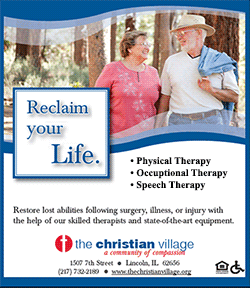|
 High on methamphetamine, Xanax and the methadone prescribed to
help her kick a heroin habit, 20-year-old Tory Schlier told police
that she was “fuzzy” about what happened to her baby boy. High on methamphetamine, Xanax and the methadone prescribed to
help her kick a heroin habit, 20-year-old Tory Schlier told police
that she was “fuzzy” about what happened to her baby boy.
Police weren’t. In an affidavit, the officer who went to Schlier’s
house on October 17, 2014, said the mother had fallen asleep on
Brayden, “causing him to asphyxiate.”
Like more than 130,000 other children born in the United States in
the last decade, Brayden entered the world hooked on drugs – a
dependency inherited from a mother battling addiction.
A 12-year-old federal law calls on states to take steps to safeguard
babies like Brayden after they leave the hospital. That effort is
failing across the nation, a Reuters investigation has found,
endangering a generation of children born into America’s growing
addiction to heroin and opioids.
In his first three weeks of life, Brayden suffered through a form of
newborn drug dependency called Neonatal Abstinence Syndrome. He
trembled and wailed inconsolably, clenching his muscles and
sometimes gasping for breath as he went through withdrawal.
When Brayden improved, Lehigh Valley Hospital released him to
Schlier and the boy’s father, a 48-year-old with a criminal record.
But doctors neglected to take a critical step: They failed to alert
child protection workers to the baby or his drug-addicted mother.
Three weeks later, Brayden was dead.

“I’d say he didn’t have a chance in life,” said David Cummings,
Brayden’s grandfather. “He was doomed, that kid, he really was.”
Reuters identified 110 cases since 2010 that are similar to
Brayden’s: babies and toddlers whose mothers used opioids during
pregnancy and who later died preventable deaths
Being born drug-dependent didn’t kill these children. Each recovered
enough to be discharged from the hospital. What sealed their fates
was being sent home to families ill-equipped to care for them.
Like Brayden, more than 40 of the children suffocated. Thirteen died
after swallowing toxic doses of methadone, heroin, oxycodone or
other opioids. In one case, a baby in Oklahoma died after her
mother, high on methamphetamine and opioids, put the 10-day-old girl
in a washing machine with a load of dirty laundry.
ONE NEWBORN EVERY 19 MINUTES
The cases illustrate fatal flaws in the attempts to address what
President Barack Obama has called America’s “epidemic” of opioid
addiction, a crisis fed by the ready availability of prescription
painkillers and cheap heroin.
In 2003, when Congress passed the Keeping Children and Families Safe
Act, about 5,000 drug-dependent babies were born in the United
States. That number has grown dramatically in the years since. Using
hospital discharge records, Reuters tallied more than 27,000
diagnosed cases of drug-dependent newborns in 2013, the latest year
for which data are available. On average, one baby was born
dependent on opioids every 19 minutes.
The federal law calls on states to protect each of these babies,
regardless of whether the drugs their mothers took were illicit or
prescribed. Health care providers aren’t simply expected to treat
the infants in the hospital. They are supposed to alert child
protection authorities so that social workers can ensure the
newborn’s safety after the hospital sends the child home.
But most states are ignoring the federal provisions, leaving
thousands of newborns at risk every year. Reuters found that at
least 36 states have laws or policies that don’t require doctors to
report each case. No more than nine states and the District of
Columbia appear to conform with the federal law. And statutes or
policies in the other five states are murky and confusing, even for
doctors and child protection workers.

In three-quarters of the 110 fatalities that Reuters identified, the
mother was implicated in her child’s death; in others, her
boyfriend, husband or another relative was.
In 75 of the cases, child protection workers were notified but
didn’t take protective measures specified in the federal law.
In Brayden’s case and a dozen more, hospitals didn’t report a
drug-dependent baby’s condition to social services and the child
died after being sent home.
“Those kids could and should be alive today and thriving,” said
former U.S. Representative Jim Greenwood, a Republican from
Pennsylvania who authored the provisions in the 2003 federal law. “I
would’ve hoped that the whole system – starting at the federal and
state levels, the obstetricians and pediatricians – would’ve gotten
it straight by now. That they haven’t is a national disgrace.”
One reason babies go unprotected: Many states don’t require
hospitals to report drug-dependent newborns if the mother was taking
methadone, painkillers or other narcotics prescribed by a doctor.
That exemption stems from a well-meaning effort to avoid
stigmatizing mothers who are being treated for addiction or other
medical problems. Taking methadone under a doctor’s care is
generally safer for a baby and its mother than if a mother tries to
stop taking opioids altogether, neonatologists said.
But those good intentions ignore a difficult truth: A mother who
abuses methadone or other legal opioids can be just as dangerous to
her newborn as a parent high on heroin. In at least 39 of the cases
in which children died, Reuters found, the mother was taking
methadone or another drug that had been prescribed.
"DEATHS WAITING TO HAPPEN"
In each of the 27,000 cases of Neonatal Abstinence Syndrome
diagnosed in 2013, hospital workers were aware of the baby’s
condition. Patient discharge records show they treated the child for
the syndrome.
 Doctors who specialize in these cases say the condition, while
sometimes agonizing for the newborn, is treatable and needn’t result
in long-term harm to the child. But a diagnosis made in the first
days of the baby’s life should serve as a warning, they say. It
often indicates that a mother is struggling with addiction, raising
questions about a family’s ability to care for the infant.
“This is precisely the time when a woman is ripe for relapse,” said
Lauren Jansson, director of pediatrics at the Center for Addiction
and Pregnancy at Johns Hopkins University in Baltimore. “She’s
feeling terrible, tired, depressed, anxious and guilty.”
Data kept by state governments suggest that thousands of these
babies and their mothers are never referred to child protection
services.
Reuters made that determination by comparing the number of newborns
diagnosed by hospitals as drug-dependent with the number of cases
referred to state child welfare authorities. Only seven states
specifically tracked referrals of newborns in drug withdrawal. In
those states, the total number of cases logged by child protection
services was less than half the number of children diagnosed.
“These are just deaths waiting to happen,” said Greenwood, who spent
three years as a child protection worker before serving six terms in
Congress.
Because so many drug-dependent newborns go unreported, no one knows
exactly how many children are injured or killed while in the care of
parents struggling with addiction.
Reuters filed more than 200 Freedom of Information Act requests with
federal, state, county and city agencies, and reviewed about 5,800
child fatality reports from across the United States to identify
such cases. Reporters also scrutinized tens of thousands of pages of
reports by police, hospitals, medics, coroners and lawyers.
By examining fatality reports and other public records, the news
agency was able to identify 110 examples of children who died across
23 states.
The toll is almost certainly higher. Most states made available only
partial information on the circumstances of infant deaths. Some of
the largest states, including New York, declined to disclose any
reports about child fatalities.
 Even so, researchers said the Reuters investigation represents the
most comprehensive examination of the perils facing drug-dependent
newborns after they are sent home.
“If we start looking at it like you’re doing, we’re going to find
more of these babies,” said Theresa Covington, director of the
National Fetal, Infant and Child Death Review Center, a
government-funded non-profit group. She called the Reuters findings
“groundbreaking and heartbreaking.”
“IN SERIOUS DANGER"
During the so-called crack-baby epidemic of the 1980s, public
concern focused on whether children exposed to cocaine in utero
would face long-term developmental problems. Less examined was
whether babies born with narcotics in their bodies were in danger
after they were treated and released from the hospital.
A longstanding law, the Child Abuse Prevention and Treatment Act,
was amended in 2003 to address that issue. The amendment orders
states to set up systems to ensure that each case in which a baby is
born drug-dependent is reported to child protection authorities.
Social services are then to develop a “plan of safe care” for the
child.
The law also makes clear that those referrals are not evidence of
abuse.
The House majority leader then – Tom DeLay, a Republican from Texas
– spoke in Congress about the importance of the amendment. “When
child protection workers aren’t told that a baby was born addicted
to drugs,” he said, “that baby is in serious danger.” The new
legislation “sends a clear message to the states: Drug-addicted
newborns must be protected.”
Although the amendment passed with almost no opposition, its impact
has been limited. At the time, the National Conference of State
Legislatures said that many states would need to pass new laws to
meet the federal provisions. Few have.
Congress offers federal funding for states that comply with the law.
But the amount of money tied to the provisions is tiny. This year,
it ranged from $83,673 for the District of Columbia, which does
comply, to $2.8 million for California, which doesn’t.
Despite the widespread lack of compliance, Reuters found that no
state has ever lost federal funding for failing to meet the law’s
provisions.
 Today, most states require health officials to report only babies
who were exposed to illicit narcotics. That means child protection
services may never learn of babies suffering withdrawal from opioids
that were legally prescribed to pregnant mothers. Some state
policies are so muddled that even child welfare officials are
confused about the reporting requirements.
Laura Velez, deputy commissioner of New York state’s Office of
Children and Family Services, initially told Reuters that doctors
there must report all cases of drug-dependent newborns, regardless
of whether the mother was taking “legal or illegal drugs.” But after
checking with a lawyer in her office, Velez offered a different
interpretation: Doctors aren’t obligated to report cases in which
the mother is using prescribed drugs and “following the course of
treatment appropriately.”
"A PANICKED, HIGH-PITCHED WAIL"
At the other extreme, states such as Alabama and Tennessee have
taken a punitive approach to expectant mothers battling addiction,
enacting laws that make opioid abuse during pregnancy a crime in
certain circumstances. Those provisions run counter to the spirit of
the federal law, which explicitly states that identifying a
drug-dependent newborn shouldn’t be construed as requiring
prosecution. Some well-intentioned doctors say the punitive measures
give hospitals a strong incentive to keep quiet about certain kinds
of cases.
“A lot of officials – nurses, social workers – say, ‘We don’t report
when the mother is trying to get better,’” said Ila Baugham, a
retired pediatrician in North Carolina who reviews cases of
unexpected child fatalities. “I always come back and say, ‘Well,
it’s not about the mother. What about the baby?’”
The White House has done little to address the problem, some doctors
say. In an October speech, President Obama said he “started studying
this issue – what’s called opioids,” when he entered office in 2009.
“And I was stunned by the statistics.”
His administration convened a conference on opioid-dependent babies
in 2012; three years later, White House “action items” included
updating agency websites. Last month, Congress passed a bill
directing the administration to move faster and devise a national
strategy within a year. A White House spokesman said the new law
“builds on ongoing efforts.”
Loretta Finnegan, the doctor who developed a widely used medical
scale to assess Neonatal Abstinence Syndrome, said she is
“discouraged and frustrated” by the administration’s response.
Statistics showing the spike in cases have been available since at
least 2012, she said.


“It’s 2015. When are they going to start doing something?” Finnegan
asked. “We know these babies are very difficult to care for. If you
do not create the proper conditions for mother and child, when they
go home it’s a setup for the mothers or others in the home to commit
abuse.”
[to top of second column] |

Infants with Neonatal Abstinence Syndrome are sometimes born into
excruciating misery. As they go through withdrawal, some shake,
struggle to eat and often sputter and choke during feedings. They
suffer fits of sneezing and severe diarrhea. Many begin crying at
the smallest stimulus, including a mother’s smile. They can cry with
such force that their bodies shudder.
“It’s a panicked, high-pitched wail, almost desperate, a sound you
don’t forget,” said Kimberly Nelson, nurse manager of the neonatal
intensive care unit at the Children’s National Medical Center in
Washington, D.C.
The symptoms are often worst during the first five weeks of life but
can last three to six months, challenging even the most patient
parents. The newborns rarely achieve deep sleep. As they endure
withdrawal, they crave the darkness and calm of the womb, conditions
almost impossible to replicate at home. In West Virginia, cases have
become so frequent that one hospital created a unit where babies are
weaned off the drugs in dimly lit rooms, sheltered from bright light
and commotion.
“It’s relentless. There’s no break,” said Rhonda Edmunds, a neonatal
nurse in Huntington, West Virginia. “You can just imagine a
sleep-deprived parent, who can’t cope with her own issues, let alone
their baby, and how that can lead to abuse or neglect.”
“YOU’RE ON THAT BABY”
In the 110 deaths Reuters identified, expectant mothers typically
had been using heroin, synthetic painkillers that include such drugs
as Percocet and OxyContin, or methadone, an opioid often prescribed
as an alternative to heroin or the other medications.
Like Brayden Cummings, the Pennsylvania baby who died at 6 weeks of
age, many of the children suffocated after hospitals released them
to mothers unable to care for a baby.
In December 2012, a Kentucky hospital sent a newborn and a
prescription for Percocet home with a 28-year-old mother who was
being treated for opioid addiction. Child protection authorities
weren’t notified about Angelica Richardson McKenney’s newborn,
Lynndaya. Under Kentucky law, the case didn’t have to be reported
because McKenney’s opioid-replacement drug, Subutex, had been
prescribed.

Five days later, on Dec. 10, Lynndaya was dead. A 36-page state
report details the final hours of the newborn’s life.
The night before Lynndaya died, McKenney later told police, she took
three different medications: the opioid Percocet, the anti-anxiety
medication Xanax, and Subutex. Lynndaya’s grandmother noticed that
McKenney’s “knees were buckling under her when she stood.” McKenney
recalled that she later fed the infant but “didn’t know what she did
with Lynndaya after that.”
The next morning, Lynndaya’s grandmother tried to wake McKenney, who
lay at the foot of the bed. Twice, the grandmother asked where the
baby was. Then she saw a corner of Lynndaya’s blanket beneath
McKenney. “Oh my God,” the grandmother told a still-high McKenney,
“you’re on that baby.”
According to the death report, the state of Kentucky ruled that
McKenney’s “neglect” had caused her baby’s death. Local prosecutor
Douglas Miller said there wasn’t enough evidence of “reckless” or
“wanton” conduct, as required by state law, to charge her.
Harrison Memorial Hospital and the doctor who delivered Lynndaya
knew of McKenney’s drug problems. The state report said that
Lynndaya “tested positive for narcotics” when she was born. McKenney
“has been testing positive throughout her pregnancy for opiates,
benzodiazepines, and marijuana, none of which she had a prescription
for,” the report said.
But no report about McKenney’s drug use was made to child protection
authorities when Lynndaya was born, state records show. Hospital
spokeswoman Mollie Smith declined to talk about the case, citing
medical privacy.
Derek Clarke, the doctor listed on the hospital discharge document,
delivered Lynndaya by Cesarean section. He later sent McKenney home
with the prescription for Percocet, one of the drugs she took the
night before she smothered her baby. The discharge also notes that
McKenney “has been taking Subutex throughout her whole pregnancy.”

Contacted by Reuters, Clarke defended his decision to send McKenney
home with Percocet. “Just because they’re a drug addict doesn’t mean
we’re not going to give them something for their pain,” he said.
The day before Lynndaya died, pharmacy records show, Clarke also
prescribed Xanax, which McKenney took with the Percocet and Subutex.
Studies have shown that combining Subutex and Xanax can be
particularly dangerous. Clarke did not respond to questions about
the Xanax prescription.
McKenney said Clarke should have known better than to give her the
prescriptions. “I’m an addict. It was my fault, of course, and also
it was his fault for offering me the medicine.”
McKenney said she has been off drugs for about two years now. She
said she wishes social services had been more involved when Lynndaya
was born.
“I think if I had been under the microscope, so to speak, I think
things would have been a lot different with somebody coming in and
looking at me,” she said. “That probably would’ve changed
everything.”
FATAL MIXTURE
Other children died of drug poisoning – not from the narcotics in
their bodies at birth but from doses administered after they left
the hospital.
In Utah, a 17-month-old girl named Jaslynn Raquel Mansfield died
last year of acute methadone toxicity. Her mother, Courtney Nicole
Howell, was on prescription methadone during and after her
pregnancy.
Howell told authorities that she twice used a syringe to mix the
narcotic with Children’s Tylenol. Her reasoning: Jaslynn “wouldn’t
eat or sleep and she wasn’t her normal baby any more,” according to
a 42-page police report marked “confidential.” “Courtney admitted
that she didn’t know what to do to get Jaslynn help,” the report
said.
In August, Howell was sentenced to up to 30 years in prison after
pleading guilty to manslaughter and exposing a child to drugs.

“The way she chose to care for the child was reckless,” Judge David
Hamilton said at sentencing. “She brought the child into the world
saddled with her addictions and her actions, and then she compounded
that.”
In a phone interview from the Timpanogos Women’s Correctional
Facility near Salt Lake City, Howell said her newborn went through
drug withdrawal at the hospital for 16 days. But the Salt Lake
Regional Medical Center never reported the case to child protection
services.
Utah is among the states that don’t require reporting cases of
newborns exposed to drugs prescribed to their mothers. Louise
Swensen, director of risk management for the hospital, said a baby
in withdrawal wouldn’t be reported to child protection unless the
mother was abusing drugs or doctors had other safety concerns.
Charri Brummer, deputy director of the state Division of Child and
Family Services, said the state “would prefer” to be notified of all
drug-exposed babies. In this case, she said, the state received no
drug-related reports on Howell before Jaslynn’s death.
In many ways, Howell represented the kind of vulnerable parent the
federal law was meant to help. Not only was her newborn going
through withdrawal, but Howell also was homeless. Jaslynn’s father
had died three months earlier from a heroin overdose. “I feel I was
lucky my daughter had to stay (in the hospital) that long because I
had no place to take her,” she said.
After she and Jaslynn were released, Howell said, they went to live
with her late boyfriend’s father and then to a women’s shelter. She
said the hospital gave her about four micro-doses of morphine to
finish weaning Jaslynn off opioids. Howell herself continued to use
methadone and other drugs, she said.
Today, she said, she wishes she had been reported to child
protection services when Jaslynn was born. “I would have welcomed
the help,” Howell said, “and it would have changed my life.”
UNMONITORED
In the case of Brayden Cummings, the 6-week-old who was accidentally
suffocated by his mother in Pennsylvania, child welfare authorities
learned of the boy only after it was too late.

In September, Brayden’s mother, Tory Schlier, pleaded guilty to
involuntary manslaughter and was sentenced to at least 15 months in
prison. At sentencing, she told a judge that she had been happy when
she got pregnant but “very scared to bring a helpless human being
into the world knowing that child would be my responsibility.”
Schlier’s drug problems were no secret. When Tory was a teenager,
her parents had sought the county’s help for her “incorrigible
behavior and drug use,” a state report said. On probation for theft
and pregnant with Brayden, Schlier was jailed in May 2014 after
testing positive for heroin, documents show. A judge released her on
July 31 – about a month before Brayden was born – on the condition
that she take methadone, the opioid-replacement drug.
The lawyer representing Schlier in Brayden’s death said that the
baby’s life could have been saved had the hospital alerted social
services. But when Schlier and Brayden were sent home, attorney
Jennifer Rapa said, “no watch was in effect and no services were
offered.”
Not even the county officials who reviewed Brayden’s death can
explain why.
The review team was led by child protection workers at Carbon County
Children and Youth Services, the local welfare agency. In a report
early this year that has not previously been made public, the team
wondered how Schlier “could have been seen by so many different
professionals before and after the baby’s birth and yet no one
considered calling Children and Youth to file a report.”
Even though Schlier was on methadone during her pregnancy, social
services were not alerted, the review team wrote. Then, after
Brayden was born drug-dependent, he “was prescribed methadone
following birth yet no one had called Children and Youth.”
Brayden was seen “by his pediatrician, who was also aware of the
baby being on methadone, but yet no one had called Children and
Youth,” the review team wrote.
The pediatrician, Narayana Gajula, said he was surprised to learn
from Reuters that the hospital never reported the case. At the time,
Pennsylvania required doctors, including Gajula, to report all cases
in which a child was born drug-dependent, as the federal law spells
out.

“There’s no doubt this baby was at risk, and the mother had already
been on drugs,” Gajula said. He said that his office generally calls
child protective services when babies seem at risk of neglect or
abuse. He assumed hospital administrators automatically reported the
case to social workers, he said. “I don’t know what transpired at
the hospital.”
Citing patient privacy, Brian Downs, a spokesman for the Lehigh
Valley Health Network, said neither the hospital nor its staff
doctors will comment on the case or the county’s report.
Gajula said he saw Brayden twice in the week before the baby’s
death, and “it seemed to be going fine.”
It wasn’t, Schlier wrote in a letter to Reuters from prison. She
said she wished that the hospital “had someone check in at our home
daily to see how things were going,” for her and for Brayden. “I was
an addict, and it was well known to everyone, but no one seemed to
care!”
It isn’t clear who finally did alert child welfare officials to
Brayden. The state’s report redacted that information. But the
report does note that the phone call didn’t come until early this
year – 80 days after the baby had died.
In June, state lawmakers voted to change the policy for reporting
babies born dependent on drugs: They loosened it. Today, if a
drug-dependent baby is born to a mother using prescribed drugs –
such as the methadone Schlier had been taking – doctors no longer
need to alert social services.
Pennsylvania’s safety net for the babies of the opioid epidemic is
now weaker than it was when Brayden Cummings died.
(Part one in a series: "Helpless & Hooked: the most vulnerable
victims of America's opioid epidemic")
(Edited by Blake Morrison. Additional reporting by Mimi Dwyer and
Blake Morrison.)
[© 2015 Thomson Reuters. All rights
reserved.]
Copyright 2015 Reuters. All rights reserved. This material may not be published,
broadcast, rewritten or redistributed. |